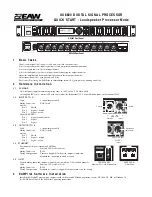Summary of Contents for 070-7066-02
Page 1: ......
Page 8: ...Welcome ...
Page 18: ...Before You Begin ...
Page 27: ......
Page 43: ...Front Panel Trigger Controls EXT NPUT I 400V pk Figure2 12 Trigger Controls 2 16 At a Glance ...
Page 51: ...Front Panel 2 24 At a Glance ScansbyARTEKMEDU ...
Page 62: ...SE Z ...
Page 63: ......
Page 95: ...DisplayingSignals In Detail e ...
Page 107: ......
Page 118: ......
Page 122: ...Appendix A Options and Accessories Appendices Scansby ARTEK MEDIA ...
Page 174: ...Glossary and Index ...



































